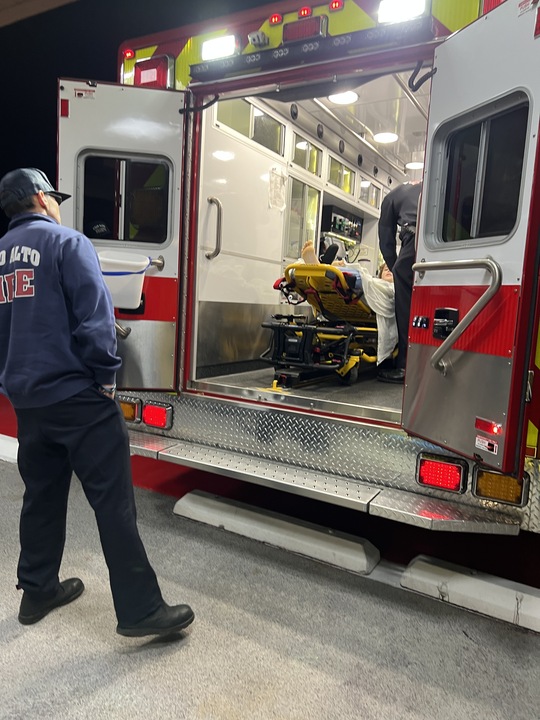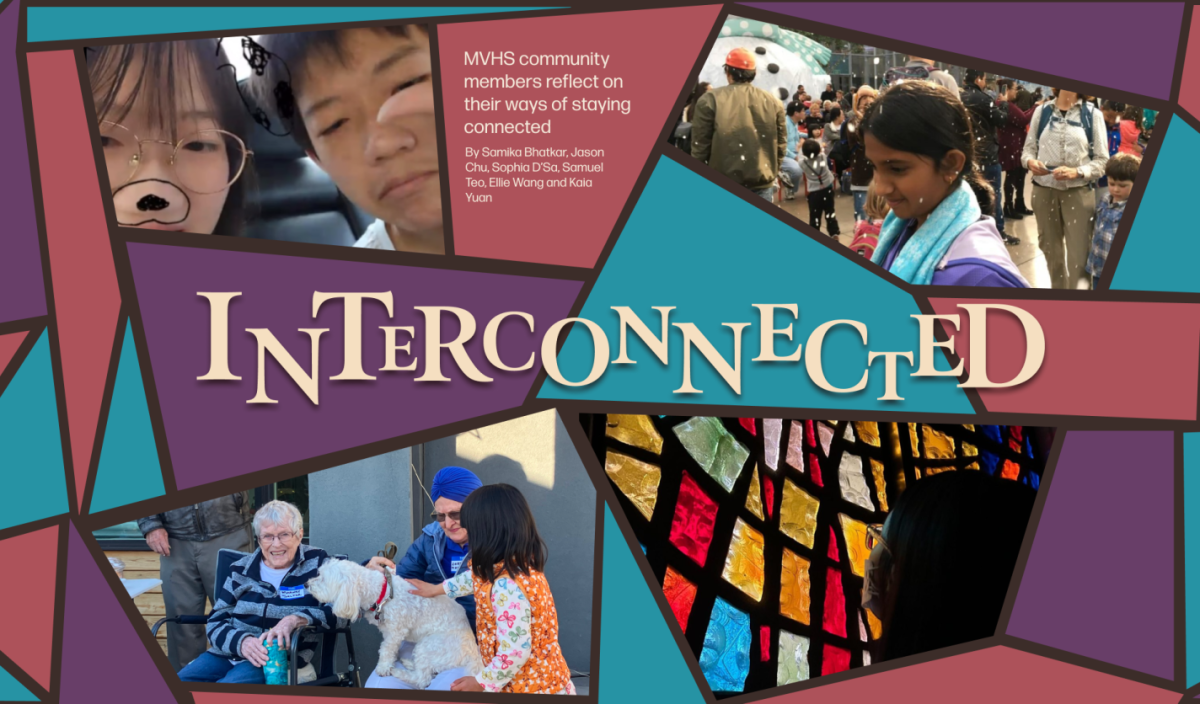When Government and Economics teacher Eric Otto opens his e-mail, he always sees a separate folder designated for parent e-mails that has been growing for the past six years of his teaching. The parents all expressed disbelief in their childís engagement in a subject that they initially thought would offer them nothing more than a bunch of old, dusty textbooks.
But only Otto knows the secret ingredient to his studentsí engagement: technology.
According to a study conducted by the University of British Columbia research, an interactive and engaging classroom environment was all it took to bolster student attendance and almost double the grasp of the concepts taught in a Physics class. The students uniformly scored twice more than their original scores.
Multisensory Education
Prior to arriving at MVHS, Otto was well known at Homestead High school for his interactive, ìout-of-your seatì teaching methods in his World and U.S. History classes.
Otto, who pursued his Masterís Degree in Educational Technology at Santa Clara University, utilizes Powerpoint presentations to connect with students through games or specific Powerpoint themes, many of them including references to pop culture and stories that build up to the openings of lectures.
“They peak student engagement more than just a lecture or traditional [Powerpoint] slide design. I definitely like to believe that my Powerpoints are very much geared toward getting students engaged and into the content,” Otto said.
In order to expose his students to the material in different ways, Otto designs class activities that require students to use senses beyond sight and sound. For example, during a game of Pictionary, Otto had Government students draw onto a tablet from his computer which, as a part of a Powerpoint slide, projected to the screen.
“My idea of teaching is that students shouldnít be just sitting at a desk all day listening to a teacher talk. They should have an opportunity to touch the history in some sort of way,” Otto said.
Forming a class network online
Social Sciences teacher Angela Estrella’s primary technological application to the class curriculum has been a blog in which her students collaborate with each other outside of the classroom.
“As teachers, weíre trying to look at what you can create with all the information at your finger tips. That’s what this blog is for me,” Estrella said.
Students are encouraged to build off of each others’ ideas on the blog when answering her discussion and free-response questions such as: “Do you think non-citizens should have the same rights as citizens?”
In addition to the blog, Estrella has introduced a number of other software tools for students to use when building projects such as Glogster, Prezi and Popplet. With these online tools, students are able to build projects, mind maps and interactive presentations.
“You’re building a community of knowledge outside these four walls that we all are accountable for participating and providing our input,” said Estrella. “I think in the future weíll see that. Your classroom isnít just 50 minutes in these four walls, but itís everywhere.”
Technology with personality
Throughout his six years of teaching at MVHS, math teacher Brian Dong has incorporated various forms of technology into his class curriculum, from TI-84 geometry programs to review games of Deal or No Deal on Powerpoint. He intends to take advantage of one of the greatest benefits he feels technology has to offer: breaking up the monotony of the average course lesson plan.
“You don’t need technology to teach high school curriculum. I think I use technology right now for student engagement, motivation, and interest rather than as an instructional tool,” Dong said. “It’s fun for me to be myself and add my own personality.”
Six years ago, Dong conducted a study with MVHS students for his Masterís degree in which he experimented with three different methods of teaching geometry: lecturing, working with manipulatives and using a software on TI-84 calculators. Though the level of comprehension of the material remained relatively constant throughout, Dong received deeper-level questions from his students when using software.
Though he acknowledges that technology is only effective when serving a purpose, he also recognizes the necessity of teacher involvement when incorporating it into class curriculum.
“Technology alone will only peak the interest of kids that find some natural connection to it. Kids aren’t going to latch onto it right away,” Dong said. “[Teachers] have to see a point and a purpose, and I think part of that is teacher enthusiasm.”
Learning how to improve student learning
Every year, English teacher Matt Brashears inevitably gets the same question from three or four students in each class: “Whoa… what is that?”
For Brashears, web-based programs, like Prezi, an interactive cloud-presentation software, offer him the best opportunity to approach teaching from different angles.
“The nice thing about Prezi is that you can physically interact with it, so students who especially learn more spatially or through kinesthetic inte

raction can have the benefit of that as well,” Brashears said. “For me personally, it better fits my learning style.”
Brashears also evolved the editing process for papers through Turnitin tools such as PeerMark and GradeMark, which allow him to places links to websites, other papers, or class notes to show examples of improved structure.
“I really have no desire to go back to having students turning in hard copies of papers or drafts.” Brashears sad. “Often times one of the complaints students have with peer editing is that the feedback that they get doesnít really help, so this software helps with that.”
During a research assignment, in addition to providing laptop carts, Brashears and social studies teacher Nick Bonacorsi allowed their 64 students to use iPads, smartphones and whatever other networking devices they had to interact and share research with each other in over a dozen different ways.
ìWe removed that barrier that prevents them from using all of that technology normally, and I was really impressed with what they were able to do with that.î
Finding the balance
Despite his affinity for technology, Otto recognizes the power of multisensory, hands-on teaching methods and simulations to convey information in memorable ways. Otto often conducted simulations that involved multiple senses, serving as opportunities in which he could introduce a topic in the most memorable way to his students.
During one simulation of trench warfare in his HHS World History class, Otto had his students crawl through a trench he built, sprayed water upon their faces to simulate bloodshed, and blindfolded some of them, while maintaining the balance between hands-on and technology by using a Powerpoint presentation to display three-dimensional images of actual trench warfare.
Though concepts such as trench warfare in World War I have been taught in World History for years without much need for technology, the teachers still find it helpful to take the extra mile to stay up to date with current issues and learning styles in education.
“That intrinsic interest is the best part; if you want to be a better teacher and you want to incorporate things that you think will help kids, you have to do it,” Dong said. “And it’s a good feeling.”




